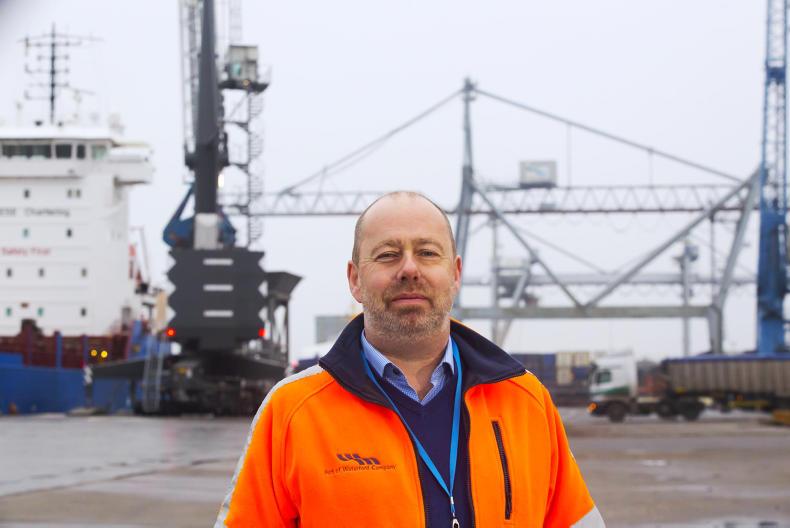What are the benefits of having a strong port infrastructure?
As an island nation, over 95% of exports move through Ireland’s ports. Irish ports facilitate this and provide the routes for importing the wide range of necessary production inputs used in the agri-sector.
What are the main products imported every year by agribusinesses?
We have seen 33% growth over the last five years in fertiliser and feedstuffs, which are our main products. There has been a step back in 2016 driven by both weather and market conditions.
How important is agribusiness to the Port of Waterford?
Port of Waterford (PoW) is deeply connected with the agri sector with over 75% of our bulk throughput being either animal feed or fertiliser. About one third of our container throughput carries agri related products coming from, or going to, European markets.
What are the main agri-products exported out of PoW?
In order of volume – 1. Milk powders, 2. Infant Formula, 3. Butter and 4. Cheese.
What are the main objectives of the PoW?
One of our main objective is to attract services to the Port that will facilitate the global exporting activities of companies like Glanbia, Ornua and Dawn. This will happen when a shipping line has clear sight of adequate volumes and rates to allow them operate profitably. Having Glanbia’s new powder plant close by is a fantastic addition and will help that business case.
What are the primary export destinations for cargo ships leaving PoW?
The container lines that come to the port service northern Europe (Netherlands, Germany, Belgium, Italy and Sweden).
Where are the primary origin of ships importing cargoes to PoW?
The bulk traffic coming to the port originates mainly from Lithuania, France, USA and the Netherlands.
What is the main advantage of PoW over ports in urban areas?
Given that we are based well outside of any urban area, the port is particularly well suited to bulk handling. The port is also very accessible and this is becoming more valued now that we are seeing a resurgence of congestion issues in our cities.
What does the future hold?
We are seeing slow steady growth, but because much of the increased production is going to markets outside of Europe that are not served by our partner container lines, we are not yet seeing these volumes crossing our quays. This is frustrating both for us and for the exporters. However, we remain optimistic on this front.






 This is a subscriber-only article
This is a subscriber-only article











SHARING OPTIONS: